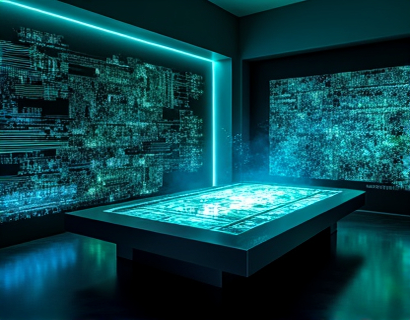Exploring Ancient Egypt Through AI-Driven Insights and Unique Artifacts
Dive into the mystical world of ancient Egypt with the aid of cutting-edge AI technology. This comprehensive guide offers an unparalleled journey through one of history's most fascinating civilizations, blending deep historical insights with unique shopping opportunities for authentic artifacts. For cultural enthusiasts and history buffs, this resource serves as an essential guide to understanding Egypt's rich heritage and bringing a piece of its timeless legacy into your life.
Unveiling Egypt's Rich Cultural Tapestry
The civilization of ancient Egypt, spanning over 30 centuries, is renowned for its monumental architecture, intricate art, and profound religious beliefs. From the majestic pyramids of Giza to the intricate hieroglyphs that adorn temple walls, every aspect of Egyptian culture tells a story. AI-driven insights provide a new dimension to exploring these ancient wonders, offering detailed analyses and contextual information that enhance the learning experience.
AI-Driven Historical Insights
Utilizing advanced AI algorithms, researchers and enthusiasts can gain deeper insights into Egyptian history. These tools analyze vast amounts of data from archaeological findings, texts, and artifacts to uncover new perspectives and validate existing theories. For instance, AI can help date artifacts more accurately by analyzing styles, materials, and contextual clues, providing a more precise understanding of Egypt's chronological timeline.
Moreover, AI-powered virtual tours allow users to explore ancient sites in unprecedented detail. High-resolution 3D models and augmented reality experiences bring the past to life, enabling visitors to walk through reconstructed temples and tombs as they once stood. This immersive technology not only educates but also inspires a deeper appreciation for the ingenuity and artistry of the ancient Egyptians.
Discovering Authentic Artifacts
For those who wish to own a piece of Egypt's history, a curated selection of authentic artifacts is available. These items, carefully sourced and authenticated, offer a tangible connection to the past. From intricately crafted jewelry to finely detailed pottery, each artifact tells a story of the people who created and used them.
The process of selecting these artifacts involves rigorous research and collaboration with experts in Egyptology. Each item is accompanied by detailed descriptions and historical context, ensuring that buyers not only possess a beautiful piece but also understand its significance. This approach respects the cultural heritage and provides educational value alongside the aesthetic appeal.
Exploring Ancient Egyptian Art and Craftsmanship
Egyptian art is a testament to the civilization's advanced craftsmanship and symbolic language. AI-driven analyses of artistic styles and techniques reveal the evolution of Egyptian art over millennia. From the stylized figures of the Old Kingdom to the naturalism of the New Kingdom, each period showcases unique artistic developments.
One of the most iconic forms of Egyptian art is hieroglyphics, a complex writing system that combined logographic and alphabetic elements. AI tools can decode and translate these symbols, providing insights into the language and literature of ancient Egypt. Virtual exhibits allow users to interact with these texts, learning about their meanings and the stories they convey.
Religious Beliefs and Practices
The religious beliefs of ancient Egypt were central to their society, influencing every aspect of life. AI-driven research into religious texts, temple architecture, and burial practices offers a comprehensive understanding of this intricate belief system. The pantheon of gods and goddesses, each with their own roles and attributes, played a crucial part in Egyptian spirituality.
AI can help identify and categorize religious artifacts, such as statues, amulets, and ritual objects, providing context about their use and significance. For example, the ankh symbol, representing eternal life, was frequently depicted in art and jewelry. Understanding these symbols enhances the appreciation of Egyptian artifacts and their cultural importance.
Daily Life in Ancient Egypt
Beyond the grand monuments and religious practices, the daily life of ancient Egyptians was rich and varied. AI-driven analyses of archaeological findings and historical texts paint a vivid picture of everyday activities, social structures, and economic systems. From agriculture and trade to family life and entertainment, each aspect of daily life is explored in detail.
Artifacts such as pottery, tools, and household items offer insights into the practical aspects of ancient Egyptian life. AI can help reconstruct daily routines and social interactions based on these artifacts, providing a more holistic view of this ancient civilization. For instance, the design and placement of kitchen utensils can reveal cooking methods and dietary habits.
Trade and Economy
The economy of ancient Egypt was sophisticated and extensive, reaching across the Mediterranean and into Africa and Asia. AI-driven research into trade routes, commodities, and economic policies sheds light on the extent of Egypt's influence and prosperity. The exchange of goods such as grains, spices, and luxury items like lapis lazuli and gold is well-documented.
Artifacts related to trade, such as weights, measures, and trade seals, provide tangible evidence of economic activities. AI can analyze these artifacts to understand the scale and nature of trade, as well as the technologies used in transportation and storage. This knowledge not only enriches historical understanding but also highlights the interconnectedness of ancient civilizations.
Egyptian Fashion and Personal Adornment
The fashion and personal adornment of ancient Egyptians reflect their social status, religious beliefs, and artistic sensibilities. AI-driven studies of clothing, jewelry, and cosmetics offer insights into the aesthetics and symbolism of these items. For example, the use of lapis lazuli in jewelry and cosmetics was reserved for the elite, signifying wealth and status.
Artifacts such as wigs, headdresses, and makeup containers provide a glimpse into the daily routines and beauty standards of ancient Egyptians. AI can help recreate these items based on historical evidence, allowing enthusiasts to experience the fashion of the past. Virtual try-on features in online stores enable users to see how these ancient accessories would look on them, blending history with modern technology.
Health and Medicine
Ancient Egyptian medicine was advanced for its time, with a focus on both spiritual and practical treatments. AI-driven analysis of medical texts, such as the Ebers Papyrus, reveals a comprehensive understanding of diseases, treatments, and surgical practices. These texts describe a wide range of ailments and their remedies, showcasing the knowledge and skills of Egyptian healers.
Artifacts related to health and medicine, such as surgical tools, herbal remedies, and medical texts, are invaluable for understanding the medical practices of the time. AI can help categorize and interpret these artifacts, providing insights into the evolution of medical knowledge and practices. For collectors, these items offer a unique connection to the medical traditions of ancient Egypt.
Conclusion
Through the lens of AI technology, the ancient world of Egypt comes alive in unprecedented detail. This fusion of historical research and modern innovation offers a rich and immersive experience for enthusiasts and learners alike. Whether exploring the grandeur of pyramids, delving into the intricacies of hieroglyphics, or owning a piece of authentic artifacts, the legacy of ancient Egypt is more accessible and engaging than ever before. Embrace the magic of Egypt's past and bring a piece of its timeless legacy into your life.











































